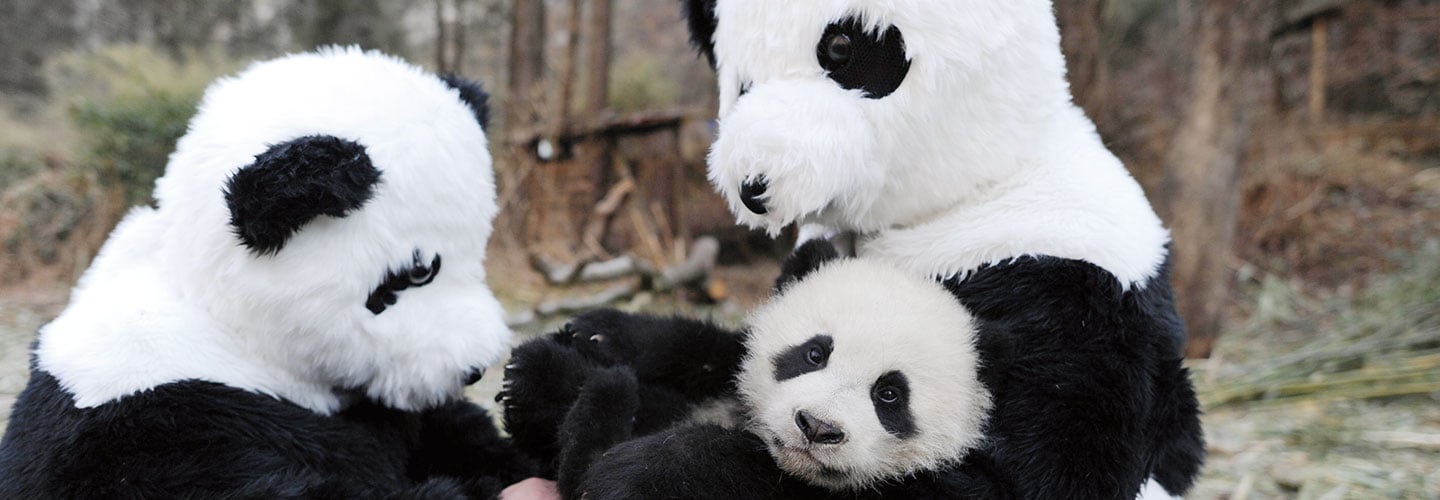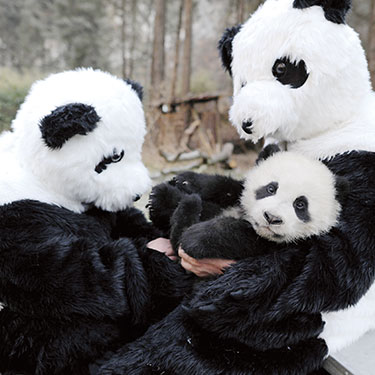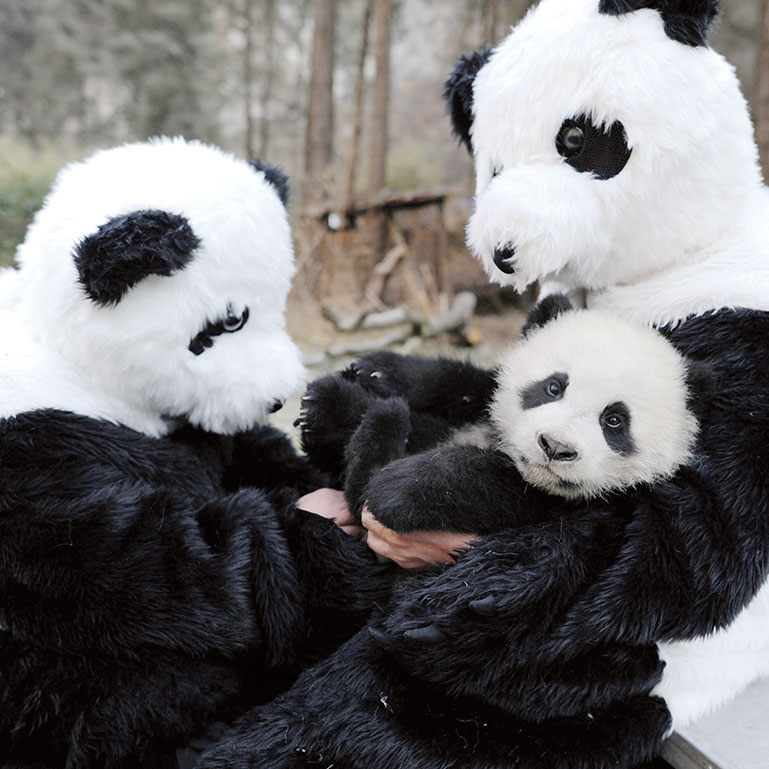Do you see two panda parents cuddling a cub in the photo? Take a closer look. Those adult pandas are humans in costume! They care for baby pandas high in the mountains of China. It’s all part of a plan to keep the furry animals from dying out.
Do you see two panda parents cuddling a cub in the photo? Take a closer look. Those adult pandas are people in costume! They care for baby pandas in the mountains of China. It’s part of a plan to keep the furry animals from dying out.



